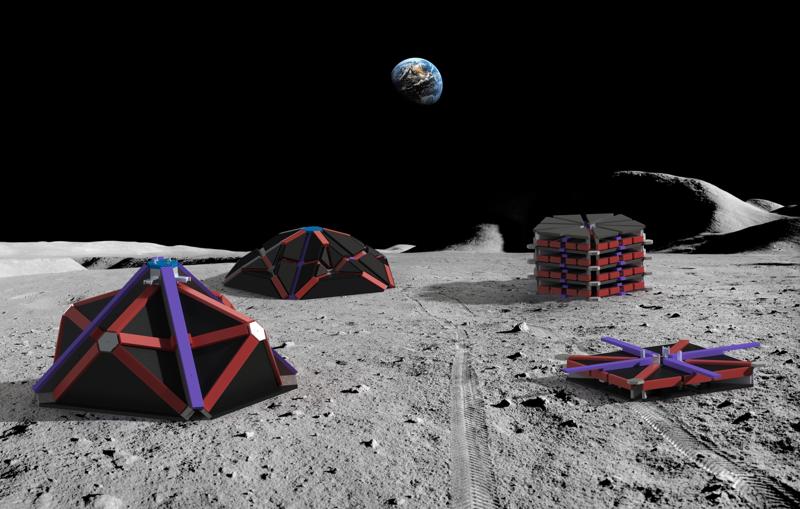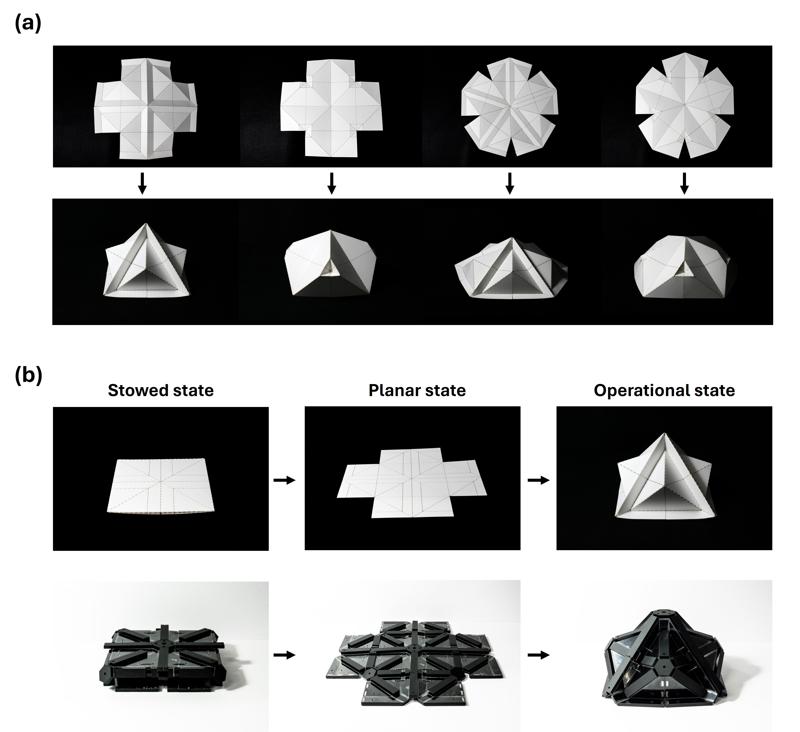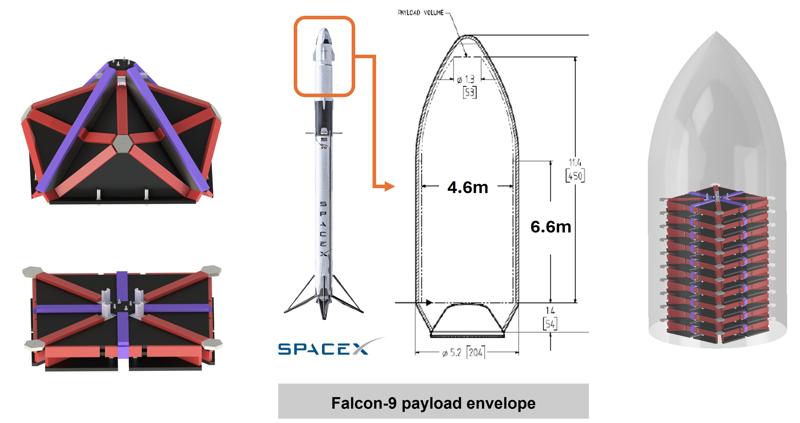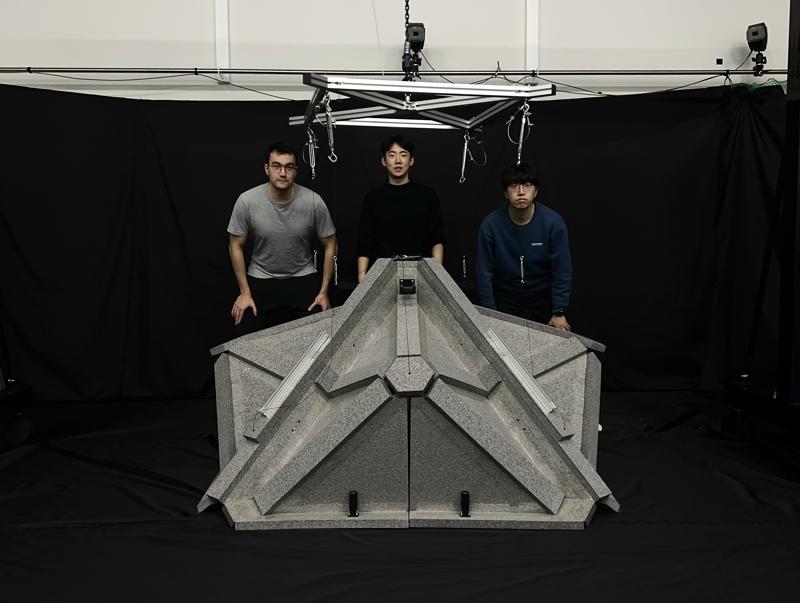a. Origami-based Deployable Space Shelter
Space Structure

 Research
Research
 Space Structure
Space Structure
 a. Origami-based Deployable Space Shelter
a. Origami-based Deployable Space Shelter
a. Origami-based Deployable Space Shelter
Principal Investigator: Jae-Hung Han
Participated Graduate Research Assistant: Tae-Hyun Kim, Keon-IK Jang, Enno
Related Projects: NRF
Summary:
- For sustainable manned missions to the Moon or Mars, space habitation system or space shelter is essential to protect astronauts from various hazards. The origami-based space shelter enables efficient transportation by launch vehicle and rapid on-site installation.
Related Recent Publication:
- [1] Kim, T.-H., Jang, K.-I., Lee, D.-Y., and Han, J.-H., “A Thickness-accommodating Method for Void-free Design in Uniformly Thick Origami,” Journal of Mechanical Design, Vol. 145, No. 12, pp. 123301, Dec. 2023.
- [2] Kim, T.-H., Jang, K.-I., Lee, D.-Y., and Han, J.-H., “Rigid-Foldable Polyhedral Origami,” AIAA Journal, Vol. 61, No. 12, pp. 5645-5657, Dec. 2023.
Origami-based reconfigurable structures
1.Goals
- To Develop a metre-scale space shelter concept which can be made of thick panel to possess high shielding performance against space radiation and folded into compact size.

Fig. 1 Concept scheme of deployable space shelter based on thick origami
2. Approaches
- Geometrical analysis on the Yoshimura-patterned tube
- Simplified mathematical modeling via the truss-hinge framework
- FEM static analysis
- Prototype fabrication with handy materials
- The proposed pattern based on modified-Miura pattern can have various enclosing 3D shape.
- It can be made of thick panel due to its rigid-foldability.

Fig. 2 Foundational pattern for the deployable space shelter (a) Various patterns and operational shapes, (b) Folding process of paper model and thick-paneled model
- The proposed pattern can be modified using the thickness-accommodated method to guarantee that the structure provides high shielding performance.
- Especially, the proposed thickness-accommodated method allows for the construction of the structure with panels of uniform thickness.

Fig. 3 Schematic illustration: (a) the proposed thickness-accommodating method in two dimensions, (b) Schematic illustration of the thickness-accommodating methods for 2D basic unit folding
3. Achievements
- The designed deployable space shelter features a compact stowed shape for efficient transportation via launch vehicles.
- Taking into account the payload capacity of SpaceXs Falcon-9 launch vehicle, a deployable space shelter with panels 30mm thick and dimensions of approximately 2m in height and 5m in diameter when deployed could allow for the transportation of 20 or more units simultaneously.

Fig. 4 Efficient storage of multiple shelters in one launch vehicle (Launch vehicle image credit: SpaceX)
- We have confirmed the feasibility of the proposed concept through the construction of a meter-scale proof-of-concept model."
- The model can be folded and deployed in a straightforward manner using wires and gravity.

Fig.5 Proof of concept model at meter-scale













